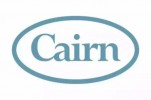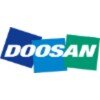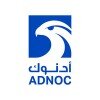Filter interviews by
North oil Company Test Engineer Interview Questions and Answers
Be the first one to contribute and help others!
Interview questions from similar companies

I applied via Campus Placement and was interviewed in Dec 2016. There were 2 interview rounds.
Interview Preparation Tips
Experience: HR was really friendly and discussed resume in detail.
Round: Technical Interview
Experience: Had more discussion on technical terms on resume.
Round: Technical Interview
Experience: Asked questions on Programming and questions related to course work mentioned in the resume. The interview was completely candidate driven.
College Name: IIT Madras

I applied via Campus Placement and was interviewed in Dec 2016. There were 4 interview rounds.
Interview Preparation Tips
Experience: There were totally 8 sections to the test. But they could be broadly put under 4 categories. Firstly all questions were compulsory to attempt and there was no negative marking. Aptitude: Basic quantitative math questions were asked. There was one simple programming question where one could code in C/Java in your local IDE and upload the code file. It was a DO or DIE question, either you get the question and proceed to the next questions of the test or the test gets stopped if the code is not successfully compiled within 5 attempts. This programming question, as was told was an important criteria to filter out candidates for the next round. There was a descriptive question asking about a recent team project done.
Tips: Achievements in sports and other extra curricular activities are valued. Mention them in the resume, if applicable.
Duration: 1 hour 30 minutes
Round: Technical Interview
Experience: In this round, they look for the candidate's experience in coding in whatever language mentioned in the resume - I was asked to write some simple codes in c. I was also asked to explain some projects from the resume.
Tips: basic knowledge of data structures, resume preparation
Round: Technical + HR Interview
Experience: In this round, the questions were mostly based on the resume and the projects done. Also, HR questions like What do you know about Schlumberger, How do you perform in a team, What makes you unique from the other candidates etc. were asked. They also ask if you have any questions from your side - Better to ask questions if you have one or if you can't think upon any specific question, ask them a doubt from whatever they have said(usually they say a lot about their company and principles before they ask you for questions)
Tips: Prepare for a HR interview separately, resume preparation
College Name: IIT Madras

I applied via Campus Placement and was interviewed in Dec 2016. There were 2 interview rounds.
Interview Preparation Tips
Experience: HR was really friendly and asked about projects in the resume.
Round: Technical Interview
Experience: Interviewer asked questions related to programming and algorithms.
Round: Technical Interview
Experience: Interviewer asked all technical details inside the resume. This round was more technical. More emphasis was on problem solving skills.
College Name: IIT Madras

I applied via Naukri.com and was interviewed before Jun 2020. There was 1 interview round.
Interview Questionnaire
28 Questions
- Q1. What is mean by safety
- Ans.
Safety refers to the condition of being protected from harm, danger, or injury.
Safety involves taking measures to prevent accidents and injuries
It includes following rules and regulations to ensure a safe environment
Safety can be achieved through proper training and education
Examples of safety measures include wearing protective gear, using safety equipment, and practicing safe behaviors
Safety is important in all indus...
- Q2. What is LEL
- Ans.
LEL stands for Lower Explosive Limit and is the minimum concentration of a gas or vapor in air that can ignite.
LEL is a safety term used in industries dealing with flammable gases and liquids.
It is expressed as a percentage of the gas or vapor in air.
If the concentration of the gas or vapor is below the LEL, it is too lean to ignite.
If the concentration is above the LEL, it is too rich and can ignite.
For example, the L...
- Q3. What is RA
- Q4. What is JSA/JHA
- Ans.
JSA/JHA stands for Job Safety Analysis/Job Hazard Analysis. It is a process of identifying potential hazards and risks in a job or task.
JSA/JHA is a systematic approach to identify and mitigate potential hazards in a job or task
It involves breaking down a job or task into steps and analyzing each step for potential hazards
The analysis includes identifying the hazards, assessing the risks, and implementing controls to m...
- Q5. Role of HSE
- Ans.
HSE plays a crucial role in ensuring the safety and well-being of employees and the environment.
HSE stands for Health, Safety, and Environment.
It involves identifying and assessing potential hazards and implementing measures to control or eliminate them.
HSE also includes training employees on safety procedures and emergency response plans.
Examples of HSE measures include wearing personal protective equipment, conductin...
- Q6. What is Hchem
- Ans.
Hchem is not a known term or acronym in the engineering field.
Hchem is not a commonly used term in engineering
It is possible that the interviewer misspoke or meant to ask a different question
Without more context, it is difficult to provide a more specific answer
- Q7. What is Hazop
- Ans.
Hazop is a structured and systematic technique used to identify potential hazards and operability problems in industrial processes.
Hazop stands for Hazard and Operability Study
It involves a team of experts analyzing a process to identify potential hazards and operability issues
Hazop is commonly used in the chemical, oil and gas, and pharmaceutical industries
The process involves breaking down the process into smaller pa...
- Q8. What is confined space
- Ans.
Confined space refers to an area that is enclosed and has limited access and ventilation.
Examples include tanks, silos, sewers, and tunnels.
Workers entering confined spaces must follow safety protocols and use specialized equipment.
Hazards in confined spaces include lack of oxygen, toxic gases, and physical obstructions.
Proper training and communication are crucial for working in confined spaces.
- Q9. What is work at height
- Ans.
Work at height refers to any task performed at a height where a person could fall and injure themselves.
Work at height involves working on ladders, scaffolding, roofs, or any other elevated surface
It is important to use appropriate safety equipment such as harnesses, guardrails, and safety nets
Workers should be trained on how to safely work at height and how to properly use safety equipment
Examples of work at height in...
- Q10. Hazard of confined space
- Ans.
Confined spaces pose a significant hazard due to limited entry and exit points, poor ventilation, and potential for hazardous substances.
Limited entry and exit points can make it difficult to escape in case of an emergency
Poor ventilation can lead to a buildup of toxic gases or lack of oxygen
Potential for hazardous substances such as chemicals, fumes, or dust
Examples include tanks, silos, sewers, and tunnels
Proper trai...
- Q11. Precautions of confined space
- Ans.
Precautions to be taken while working in confined spaces
Proper ventilation and air quality testing
Use of personal protective equipment
Proper lighting and communication equipment
Training and certification for workers
Emergency rescue plan in place
- Q12. What is LEL&UEL
- Ans.
LEL&UEL stands for Lower Explosive Limit and Upper Explosive Limit respectively. They are the minimum and maximum concentrations of a flammable gas or vapor in air that can ignite.
LEL is the lowest concentration of a gas or vapor that can ignite
UEL is the highest concentration of a gas or vapor that can ignite
Concentrations between LEL and UEL are considered flammable
LEL and UEL vary depending on the gas or vapor
LEL an...
- Q13. What is competent person
- Q14. What is fire
- Ans.
Fire is a chemical reaction that releases heat, light, and various gases.
Fire is a rapid oxidation process that occurs when fuel (such as wood, paper, or gasoline) combines with oxygen in the presence of heat or a spark.
It releases heat, light, and various gases such as carbon dioxide, water vapor, and nitrogen oxides.
Fire can be beneficial (such as for cooking or heating) or destructive (such as in wildfires or house ...
- Q15. Types of fire
- Ans.
There are four types of fire: Class A, Class B, Class C, and Class D.
Class A fires involve ordinary combustibles such as wood, paper, or cloth.
Class B fires involve flammable liquids or gases such as gasoline, oil, or propane.
Class C fires involve electrical equipment such as appliances, wiring, or circuit breakers.
Class D fires involve combustible metals such as magnesium, titanium, or sodium.
- Q16. Type of extinguisher
- Ans.
There are different types of fire extinguishers for different types of fires.
Water extinguishers for Class A fires (wood, paper, cloth, etc.)
CO2 extinguishers for Class B and C fires (flammable liquids and electrical fires)
Dry chemical extinguishers for Class A, B, and C fires
Foam extinguishers for Class A and B fires
Wet chemical extinguishers for Class K fires (cooking oils and fats)
- Q17. Modes of heat transfer
- Ans.
Modes of heat transfer include conduction, convection, and radiation.
Conduction is the transfer of heat through a material without any movement of the material itself.
Convection is the transfer of heat through the movement of fluids, such as air or water.
Radiation is the transfer of heat through electromagnetic waves, such as from the sun or a fire.
- Q18. How to prevent fire
- Ans.
Preventing fire requires proper handling of flammable materials and regular maintenance of electrical equipment.
Store flammable materials in designated areas away from heat sources
Regularly inspect and maintain electrical equipment
Install smoke detectors and fire extinguishers in appropriate locations
Train employees on fire safety procedures and evacuation plans
- Q19. What is msds
- Ans.
MSDS stands for Material Safety Data Sheet.
MSDS provides information about hazardous chemicals and substances.
It includes information about the physical and chemical properties of the substance, health hazards, precautions for safe handling and use, and emergency procedures.
MSDS is required by law for all hazardous chemicals and substances used in the workplace.
It is important to read and understand the MSDS before usi...
- Q20. How to do firefighting
- Ans.
Firefighting involves identifying and extinguishing fires to prevent damage and loss of life.
Assess the situation and determine the type and size of fire
Use appropriate firefighting equipment such as fire extinguishers, hoses, and pumps
Follow safety protocols and wear protective gear
Coordinate with other firefighters and emergency responders
Evacuate people from the affected area
Monitor the situation and ensure the fire
- Q21. How to prevent the accident
- Ans.
Prevent accidents by identifying potential hazards and implementing safety measures.
Conduct regular safety audits and risk assessments
Provide proper training and education to employees
Implement safety protocols and procedures
Use appropriate safety equipment and gear
Encourage a culture of safety and accountability
Regularly review and update safety policies and procedures
- Q22. How to investigate the accident
- Ans.
To investigate an accident, follow a systematic approach involving data collection, analysis, and identification of root causes.
Gather all available information about the accident, including eyewitness accounts, photographs, and any relevant documents or records.
Conduct interviews with individuals involved in the accident to gather their perspectives and insights.
Examine the accident scene for physical evidence, such a...
- Q23. Emergency procedure
- Q24. What is H2s
- Ans.
H2S is a colorless, flammable, and toxic gas with a strong odor of rotten eggs.
H2S is commonly known as hydrogen sulfide.
It is produced naturally by the breakdown of organic matter and is found in natural gas, crude oil, and volcanic gases.
It is highly toxic and can cause respiratory failure, loss of consciousness, and even death.
H2S is used in various industries such as oil and gas, mining, and pulp and paper.
It is al...
- Q25. Properties of H2s
- Ans.
H2S is a colorless, flammable, and toxic gas with a strong odor of rotten eggs.
H2S is highly flammable and can ignite easily
It is toxic and can cause respiratory failure
It has a distinctive odor of rotten eggs
H2S is used in the production of sulfuric acid and in the petroleum industry
- Q26. Hirerchy procedure
- Q27. Permissible exposure limit of H2s,co,co2,methane
- Ans.
Permissible exposure limits (PEL) are the maximum allowable concentrations of hazardous substances in the workplace.
H2S: PEL is 10 ppm (parts per million) over an 8-hour workday
CO: PEL is 50 ppm over an 8-hour workday
CO2: No specific PEL, but recommended exposure limit is 5,000 ppm over an 8-hour workday
Methane: No specific PEL, but recommended exposure limit is 1,000 ppm over an 8-hour workday
- Q28. Short term exposure limit of H2s
- Ans.
Short term exposure limit (STEL) of H2S is 10 ppm.
STEL is the maximum concentration of a substance that a worker can be exposed to for a short period of time without suffering from immediate or long-term health effects.
The STEL for H2S is set at 10 ppm (parts per million) by OSHA (Occupational Safety and Health Administration).
Exposure to H2S at levels above the STEL can cause symptoms such as eye irritation, headache,...
Interview Preparation Tips

I applied via Naukri.com and was interviewed before May 2020. There was 1 interview round.
Interview Questionnaire
1 Question
- Q1. Write the equation for dynamics and wave spectra equations. I do not remember questions as it is 3 years back.
Interview Preparation Tips

I applied via Job Portal and was interviewed before Dec 2021. There were 3 interview rounds.

(1 Question)
- Q1. Control valves on-off valves
(1 Question)
- Q1. PSV pressure regulators
Interview Preparation Tips


(1 Question)
- Q1. Ammonia process
(2 Questions)
- Q1. How much salary expectations?
- Q2. Salary Negotiable
Interview Preparation Tips

(2 Questions)
- Q1. All questions where asked based on resume
- Q2. Project related questions

(1 Question)
- Q1. School, college name, passout year, marks, Percentage, etc. All genuine questions only. Previous company experience. Reason for change, etc.
(12 Questions)
- Q1. What grades of steel pipe used in cgd?
- Ans.
Various grades of steel pipe are used in CGD (City Gas Distribution).
Different grades of steel pipe are used in CGD based on factors like pressure rating, temperature, and application requirements.
Common grades of steel pipe used in CGD include API 5L Grade B, ASTM A106 Grade B, and ASTM A333 Grade 6.
Higher grades of steel pipe may be used for high-pressure applications or in corrosive environments.
The selection of ste...
- Q2. Which type of welding and what electrode is used ?
- Ans.
The type of welding and electrode used depends on the specific application and materials being joined.
Common types of welding include arc welding, MIG welding, TIG welding, and spot welding.
The choice of welding method depends on factors such as the type of metal, thickness, and desired weld quality.
For example, arc welding often uses electrodes made of materials like carbon steel, stainless steel, or cast iron.
MIG wel...
- Q3. What is meant by E6010
- Ans.
E6010 is a type of electrode used in welding that produces deep penetration and is commonly used for welding in the vertical and overhead positions.
E6010 is a classification of welding electrode according to the American Welding Society (AWS) system.
It is a cellulose-based electrode that provides excellent arc stability and deep penetration.
The 'E' in E6010 stands for electrode, while the '60' indicates the tensile str...
- Q4. How hydrotest is done. Explain in details with formula for air volume calculation.
- Ans.
Hydrotest is a process of testing the strength and integrity of a pressure vessel or pipeline.
Hydrotest involves filling the vessel or pipeline with water and pressurizing it to a specified level.
The pressure is held for a specified duration to ensure there are no leaks or failures.
Air volume calculation is used to determine the amount of air needed to pressurize the vessel or pipeline.
The formula for air volume calcul...
- Q5. What is dead weight tester and what is its working principle.
- Ans.
A dead weight tester is a device used to calibrate pressure gauges by applying known weights to a piston.
Consists of a piston-cylinder assembly and a set of calibrated weights
Weights are placed on the piston to generate a known pressure
Pressure generated is compared to the reading on the gauge being calibrated
Used for high-precision calibration of pressure gauges
Commonly used in industries such as oil and gas, aerospac
- Q6. What types of defects in welding and what is acceptance criteria of common defects ?
- Ans.
Common welding defects include porosity, undercutting, and lack of fusion. Acceptance criteria vary based on the type of defect.
Porosity: voids or gas pockets in the weld. Acceptance criteria depend on the size and location of the porosity.
Undercutting: groove in the base metal near the weld. Acceptance criteria depend on the depth and length of the undercut.
Lack of fusion: incomplete bonding between the weld and base ...
- Q7. What is dwell time in DPT ?
- Q8. What is WPS, PQR, WQT, EQT, etc?
- Ans.
WPS is Welding Procedure Specification, PQR is Procedure Qualification Record, WQT is Welder Qualification Test, EQT is Equipment Qualification Test.
WPS is a document that outlines the welding process to be used for a specific job.
PQR is a record of the welding parameters used during a test weld.
WQT is a test that certifies a welder's ability to perform a specific type of welding.
EQT is a test that certifies the equipm
- Q9. What is difference between seam pipe and seamless pipe ? Which pipe are used in cgd and why ?
- Ans.
Seam pipe has a welded seam while seamless pipe is made without any seam. CGD uses seamless pipes for better safety and efficiency.
Seam pipes have a welded seam while seamless pipes are made without any seam.
Seam pipes are cheaper than seamless pipes.
Seamless pipes are stronger and more reliable than seam pipes.
CGD (City Gas Distribution) uses seamless pipes for better safety and efficiency.
Seamless pipes are used in h...
- Q10. What is TCP and what purpose it serve ?
- Ans.
TCP is a protocol that provides reliable, ordered, and error-checked delivery of data between applications.
TCP stands for Transmission Control Protocol.
It is a connection-oriented protocol that operates at the transport layer of the OSI model.
TCP provides reliable, ordered, and error-checked delivery of data between applications.
It establishes a connection between two hosts and ensures that data is transmitted correctl...
- Q11. What is normal psp level ?
- Q12. Which is longest pipeline route in India and World ?
- Ans.
The longest pipeline route in India is the 1,397 km long Mundra-Pathanamthitta pipeline. The longest pipeline in the world is the Druzhba pipeline.
The Mundra-Pathanamthitta pipeline is used to transport crude oil from Gujarat to Kerala.
The Druzhba pipeline is a network of pipelines that runs from Russia to several European countries.
The Druzhba pipeline is approximately 4,000 km long.
Other long pipelines in India inclu...
Interview Preparation Tips
Skills evaluated in this interview

I applied via Approached by Company and was interviewed in Nov 2023. There were 3 interview rounds.

(2 Questions)
- Q1. How to handle emergency PE pipeline damages ?
- Ans.
Emergency PE pipeline damages can be handled by following proper protocols and procedures.
Immediately isolate the damaged section of the pipeline to prevent further leakage or damage.
Notify the relevant authorities and emergency response teams to assess the situation and provide assistance.
Implement temporary repairs or containment measures to minimize the impact of the damage.
Coordinate with the appropriate stakeholde...
- Q2. What kind of instruments are there in District Regulating Skid ???
- Ans.
District Regulating Skid instruments include pressure gauges, flow meters, control valves, and temperature sensors.
Pressure gauges are used to measure the pressure of the fluid in the skid.
Flow meters are used to measure the flow rate of the fluid passing through the skid.
Control valves are used to regulate the flow or pressure of the fluid.
Temperature sensors are used to measure the temperature of the fluid in the ski
(1 Question)
- Q1. Tell me about your self ???
- Ans.
I am a highly experienced Senior Engineer with a strong background in software development and project management.
Over 10 years of experience in software development
Proficient in multiple programming languages such as Java, C++, and Python
Extensive knowledge of software development methodologies and best practices
Proven track record of successfully leading and delivering complex projects
Strong problem-solving and analy...
Tell us how to improve this page.
Interview Questions for Popular Designations
- Automation Test Engineer Interview Questions
- Senior Test Engineer Interview Questions
- Software Testing Engineer Interview Questions
- Manual Test Engineer Interview Questions
- Software Tester Interview Questions
- Senior Software Engineer Testing Interview Questions
- Senior Automation Test Engineer Interview Questions
- Senior Software Test Engineer Interview Questions
- Show more
Interview Questions from Similar Companies
|
Material Controller
4
salaries
| ₹5 L/yr - ₹30 L/yr |
|
Lifting and Rigging Supervisor
4
salaries
| ₹20.2 L/yr - ₹25.5 L/yr |
|
Senior Electrical Technician
3
salaries
| ₹13 L/yr - ₹18 L/yr |
|
Production Operator
3
salaries
| ₹20.4 L/yr - ₹25 L/yr |
|
Electrical Commissioning Engineer
3
salaries
| ₹40 L/yr - ₹40 L/yr |

Petrofac

TechnipFMC

Schlumberger

Toyo Engineering
- Home >
- Interviews >
- North oil Company Interview Questions >
- North oil Company Test Engineer Interview Questions









